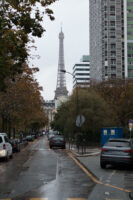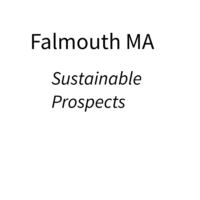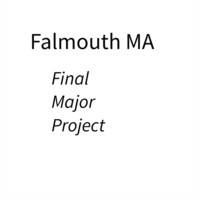My third visit to PhotoLondon having only missed the first edition in 2015. Events such as PhotoLondon are useful to get an idea of what artist represented by major galleries have produced though that has be tempered with the fact that for galleries their many focus is to sell work to prospective buyers as have space at one of these shows comes with a significant commercial outlay.
My objectives for PhotoLondon this year were to network with a few gallerists I know plus look at work being exhibited to gain some additional ideas for my installation to add to the melting pot of existing ideas. This journal entry as a result is not a review of PhotoLondon rather it focuses on installation ideas that I found interesting.
The first one of note were two piece by Gregory Scott who is represented by Catherine Edelman Gallery. These pieces were interesting because they incorporated moving images. The works consisted of a painting of an installation space that had photo realistic qualities The frames in the gallery had been cut out to expose a UHD monitor within those frames Scott played short view clips on a 5:00 loop. I found the piece interesting because from a distance it looks like a gallery installation image however on closer inspection you see that the images are changing. It reminds me of cinemagrams that combine still and moving images. I could use this concept for the moving image pieces I am considering for the my exhibition.
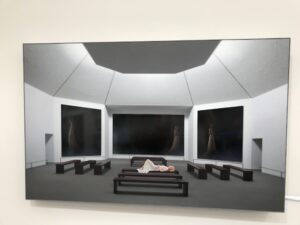
The second visual display concept that caught my interest was an Augmented Reality (AR) piece being shown by Edward Burtynsky that uses an image as an still image as a target that triggers a moving image or 3D representation on the iPad the reader is able to move the iPad and around the space and look at the subject from different angles. Moving the iPad closer to the target images allows the reader to look at the image in greater detail. For the experience to be meaningful the tablet has to either story all of the detail of the image or have a good connection to the server that hosts the image. The still image has to have sufficient detail or either recognise the change in position of the tablet or maybe they use the motion sensors to provide additional information on motion of the device. In my original proposal for my Final Major Project I made reference to creating a virtual reality installation space at the time feedback suggested scepticism about the quality of the resulting work. This demonstration shows how this surface with the art space has evolved in less than two years. For me it is an interesting space to explore as it creates new possibilities that allow an artist to express ideas that might not work on any of the current surfaces available for representation. This is an area that I will look to experiment around to identify strategies that I could use within practice.

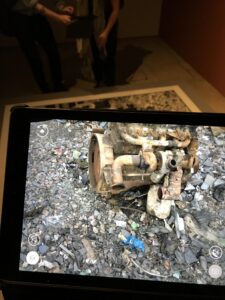
PhotoLondon included more traditional hangs such as a grid of instant images arranged in frames with large borders that gives each frame space to breath so that the reader can view the images as a collection while the small size of the instant images encourages the viewer to approach closer and examine the detail contained within the image.
I spent time speaking to Chris Littlewood of Flowers Gallery that represents a number of photographers that I consider as contemporary counterparts for my practice such as Simon Roberts and Nadav Kander. Flowers Gallery represent an aspirational target in terms of gallery representation.
Hannah Watson of T J Boutling is another gallery owner who I have meet on a number of occasions however her gallery represents arts that sit in a different segment of the contemporary art space compared to my work.
Overall PhotoLondon provided a similar set of works to prior years and acts as a useful reference point in terms of is being sold at the higher end of the photographic art market.

